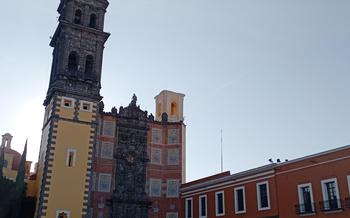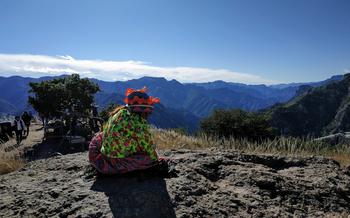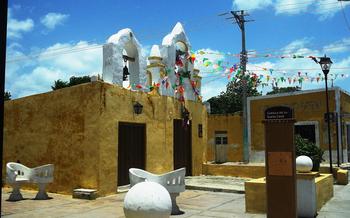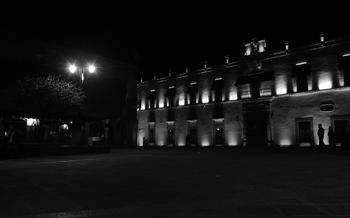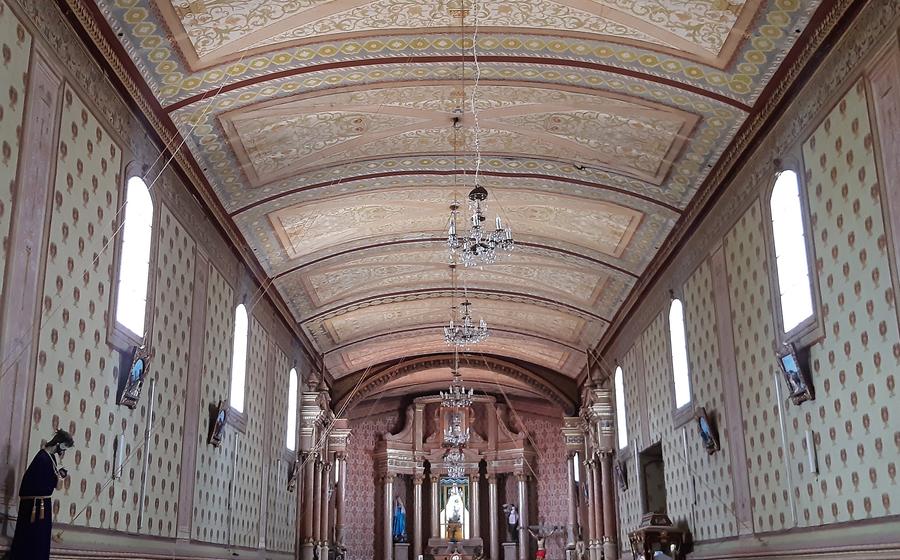
Peña de San Miguel
- Peña de San Miguel: An Overview
- Unparalleled Panoramic Views
- Local Legends and Folklore
- Flora and Fauna of the Hill
- The Stairs to Heaven
- Local Festivals and Celebrations
- The Path of the Cross
- The Legend of the Treasure
- Tips for Visiting
- Insider Tip: The Secret Garden
Peña de San Miguel: An Overview
The Peña de San Miguel, a's identity. Its historical significance and stunning views have made it a popular destination for locals and tourists alike.
The hill's strategic location has made it a significant landmark throughout Morelia's history. Its elevation offers breathtaking panoramas of the city, showcasing its colonial architecture, vibrant neighborhoods, and the surrounding mountains.
Visiting the Peña de San Miguel is a must for anyone seeking to fully experience the beauty and culture of Morelia. The hill is easily accessible by foot, car, or local transportation, making it a convenient destination for visitors. Whether you're looking for a challenging hike, a spiritual pilgrimage, or simply an opportunity to admire the city from above, the Peña de San Miguel has something to offer everyone.
-
Entrance Fees: The Peña de San Miguel is free to visit.
-
Operating Hours: The hill is open 24 hours a day, seven days a week.
-
Accessibility: The hill can be reached by foot, car, or local transportation. There are several hiking trails leading to the summit, as well as a scenic road that offers panoramic views along the way.
Unparalleled Panoramic Views
The Peña de San Miguel offers unparalleled panoramic views of the city of Morelia from its summit. As you reach the top of the hill, you'll be greeted by a breathtaking vista that stretches out before you, showcasing the city's iconic landmarks and the surrounding landscapes. The city of Morelia, with its red-tiled roofs, colonial architecture, and the majestic Morelia Cathedral, takes center stage in this breathtaking panorama. Gaze upon the sprawling cityscape, adorned with historical churches, colorful buildings, and verdant plazas, all harmoniously blending together. The view extends beyond the city limits, encompassing the picturesque mountain ranges that cradle Morelia, creating a stunning backdrop.
The best time to visit the Peña de San Miguel for the most captivating views is during the golden hours of sunrise or sunset. As the sun casts its warm glow, the city transforms into a kaleidoscope of colors, with the buildings bathed in a soft, ethereal light. The sky becomes a canvas of vibrant hues, painting a breathtaking spectacle that will leave you in awe. Whether you're a photography enthusiast, a nature lover, or simply seeking a moment of tranquility, the Peña de San Miguel's panoramic views are an absolute must-see experience.
Local Legends and Folklore
The Peña de San Miguel is steeped in fascinating legends and folklore, passed down through generations by the local people of Morelia. One captivating tale tells of the origins of the hill itself. Legend has it that a giant named Tzintzin was once tasked with building a causeway between two mountains. However, as he worked, he was interrupted by a beautiful woman who distracted him with her charms. In his distraction, Tzintzin accidentally dropped a huge rock, which formed the Peña de San Miguel.
Another legend recounts the story of a brave princess named Mintzita. When her kingdom was threatened by an evil sorcerer, she climbed to the top of the Peña de San Miguel and prayed to the gods for help. In response, a giant eagle descended from the sky, carrying a magical sword that Mintzita used to defeat the sorcerer and save her people.
These legends, deeply rooted in the cultural heritage of Morelia, add an enchanting layer to the Peña de San Miguel, making it a place of mystery and wonder beyond its historical and natural significance.
Flora and Fauna of the Hill
The Peña de San Miguel is not just a historical and cultural landmark but also a haven for diverse flora and fauna. As you ascend the hill, you'll be greeted by a rich tapestry of plant life, including endemic species and vibrant wildflowers. The hill's unique microclimate provides a suitable habitat for various bird species, making it a paradise for birdwatchers. Keep an eye out for colorful native birds flitting among the trees and shrubs. Conservation efforts are underway to protect the hill's natural environment, ensuring its ecological balance and preserving its beauty for generations to come. Embracing the principles of ecotourism, visitors are encouraged to respect and protect the delicate ecosystem while exploring the hill's natural wonders.
The Stairs to Heaven
A prominent feature of the Peña de San Miguel is the long staircase that leads up to the chapel and the cross. This staircase, with its hundreds of steps, is not just a means of ascent but also holds symbolic and spiritual significance. For many, climbing the stairs is a pilgrimage, a physical challenge that represents a spiritual journey.
The climb is not for the faint of heart, but the effort is rewarded with breathtaking views and a sense of accomplishment. Along the way, visitors can pause at the Stations of the Cross, which commemorate the crucifixion of Jesus. The stations offer an opportunity for reflection and contemplation, making the climb a spiritual as well as a physical experience.
For those who may find the stairs too challenging, there are alternative routes to the summit, such as scenic roads or gentler hiking trails. However, climbing the stairs is a unique and rewarding experience that allows visitors to connect with the history, culture, and spirituality of the Peña de San Miguel.
Local Festivals and Celebrations
The Peña de San Miguel is not just a natural and historical landmark but also a site of cultural significance, hosting various events and celebrations throughout the year. During Holy Week, the hill becomes a center of religious processions and ceremonies, as locals reenact the Stations of the Cross and commemorate the crucifixion of Jesus. These processions are a spectacle of devotion and tradition, drawing both pilgrims and tourists alike.
Beyond religious observances, the Peña de San Miguel also hosts traditional festivals showcasing local culture. These events feature vibrant performances of music, dance, and storytelling, offering visitors a glimpse into the rich heritage of Morelia. One such festival is the annual Fiesta de San Miguel Arcángel, held in September, which honors the patron saint of the chapel. During this festival, the hill comes alive with music, food stalls, and traditional dances, creating a lively and festive atmosphere.
The Path of the Cross
Along the trail leading up to the Capilla de San Miguel Arcángel, visitors will encounter the Stations of the Cross, a series of 14 markers or small shrines depicting scenes from the crucifixion of Jesus Christ. These stations serve as a reminder of the Lord's passion and sacrifice, and for many pilgrims, they offer an opportunity for reflection and spiritual contemplation during their climb.
The Path of the Cross, also known as the Via Crucis, is a Catholic devotion that commemorates the suffering and death of Jesus as he carried his cross to Calvary. Each station represents a specific event or moment along this journey, such as Jesus being condemned to death, being stripped of his garments, falling under the weight of the cross, and ultimately being crucified.
As visitors make their way up the Peña de San Miguel, they can pause at each station to pray, meditate, or simply reflect on the significance of Jesus' sacrifice. The stations serve as a powerful reminder of the Lord's love and compassion, and they can help pilgrims to connect more deeply with the spiritual meaning of their journey.
In addition to their religious significance, the Stations of the Cross on the Peña de San Miguel also hold historical and cultural importance. They have been a part of the hill's landscape for centuries, and they have played a role in the religious traditions and practices of the local community. For many people in Morelia, the Path of the Cross is a cherished symbol of faith and devotion, and it continues to draw pilgrims from far and wide.
The Legend of the Treasure
Adding an aura of mystery and intrigue to the Peña de San Miguel is the captivating legend of hidden treasure. Stories and rumors abound among locals about treasure hunters who have searched diligently for the lost wealth said to be buried somewhere on the hill. The origins of this legend are shrouded in historical context, possibly dating back to the colonial era when Morelia was a bustling mining town. The tales of hidden gold and silver have been passed down through generations, fueling the imaginations of adventurers and treasure seekers alike. While the existence of the treasure remains unconfirmed, the legend adds an element of excitement and mystery to the Peña de San Miguel, capturing the fascination of visitors and locals alike.
Tips for Visiting
Planning Your Visit:
Timing: Aim for the early morning or late afternoon to avoid the midday heat and enjoy the best lighting for photography. Weather: Check the forecast before your visit, as the weather in Morelia can change quickly. Dress in layers and bring a raincoat if there's a chance of rain. Essentials: Pack comfortable hiking shoes, a hat, sunscreen, and plenty of water. Consider bringing snacks and a camera to capture the stunning views.
Hiking Safety:
Stay on the Trail: Stick to the designated trails to avoid disturbing the natural environment and ensure your safety. Hydration: Stay hydrated by bringing enough water or refilling your bottle at the water fountain near the chapel. Respect the Environment: Leave no trace by packing out all your trash and avoiding disturbing the flora and fauna.
Local Customs:
Be Respectful: Remember that the Peña de San Miguel is a sacred site for many locals. Be respectful of their customs and traditions. Ask Permission: If you encounter any locals, ask for permission before taking their photos or entering their property. Support Local Vendors: Consider buying souvenirs or refreshments from local vendors to support the local economy.
Insider Tip: The Secret Garden
Beyond the main viewpoints and the chapel, there's a hidden gem waiting to be discovered on the Peña de San Miguel—the Secret Garden. Tucked away among the trees and rocks, this enchanting spot offers a tranquil oasis with breathtaking views of the city. To find the Secret Garden, take the trail that leads past the cross and follow it until you reach a small gate. Step inside, and you'll be greeted by a lush, colorful garden filled with fragrant flowers, exotic plants, and serene seating areas. Take a moment to relax and soak in the beauty of this hidden paradise, while enjoying a unique perspective of Morelia and the surrounding mountains.
